Old Stone House Winery
Bedrock Wine Co.
Ode to Lulu California Old Vine Rosé Blend
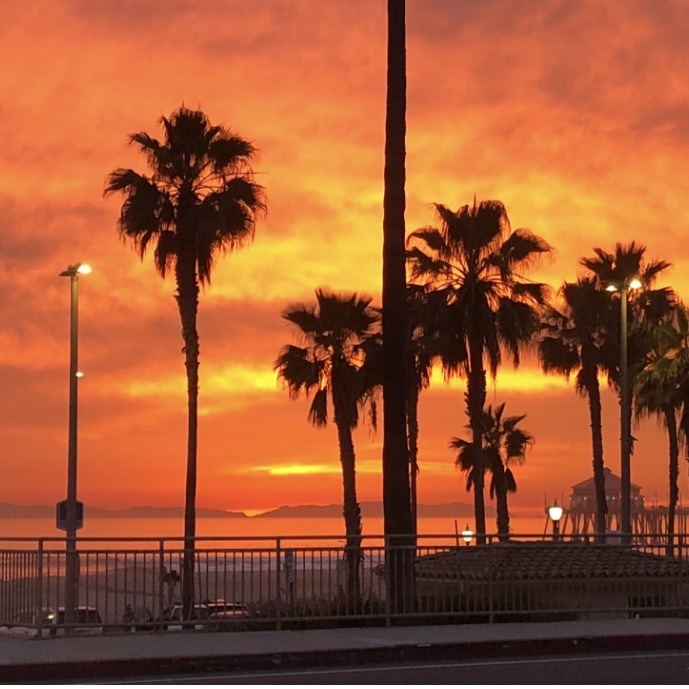

Château Lynch-Bages
Grand Cru Classé Pauillac Cabernet Sauvignon Blend 2000
The 2000 is delicious but, it is evolving at a glacial pace. Out of magnum.
On the nose, touch of barnyard, glycerin, ripe; blackberries, dark cherries, black raspberries, plum, strawberries & cherries. Vanilla, dry clay, limestone, river stones, just a touch of pyrazines & bandaid, dark,,turned, moist earth, dry grass and dry & fresh dark florals.
The body is full, round & sexy. Dry softened, sweet tannins. ripe; blackberries, dark cherries, black raspberries, plum, strawberries & cherries. Vanilla, dry clay, limestone, river stones, just a touch of pyrazines & bandaid, fresh tobacco leaf, saddle-wood, dry underbrush, dark, turned, moist earth, dry grass and dry & fresh dark florals. The acidity is magnificent. The structure, tension, length and balance are sensational. The finish is drop dead gorgeous. I’d still hold mine another 5 years as long as you have 3-4 bottles for more 5 year increments.
Photos of, their Estate vines, Clyde Beffa-Owner of K&L Wine Merchants, Owner of Chateau Lynch Bages - Jean-Michel Cazes, guests of the dinner and a sunset view from their Estate.
Producer notes and history...Lynch Bages takes its name from the local area where the Chateau is located in Bages. The vineyard of what was to become Lynch Bages was established and then expanded by the Dejean family who sold it in 1728 to Pierre Drouillard.
In 1749, Drouillard bequeathed the estate to his daughter Elizabeth, the wife of Thomas Lynch. This is how the estate came to belong to the Lynch family, where it remained for seventy-five years and received the name Lynch Bages. However, it was not always known under that name.
For a while the wines were sold under the name of Jurine Bages. In fact, when the estate was Classified in the 1855 Classification of the Medoc, the wines were selling under the name of Chateau Jurine Bages. That is because the property was owned at the time by a Swiss wine merchant, Sebastien Jurine.
In 1862, the property was sold to the Cayrou brothers who restored the estate’s name to Chateau Lynch family.
Around 1870, Lou Janou Cazes and his wife Angelique were living in Pauillac, close to Chateau Pichon Longueville Baron. It was here that Jean-Charles Cazes, the couple’s second son, was born in 1877.
In the 1930’s, Jean-Charles Cazes, who was already in charge of Les-Ormes-de-Pez in St. Estephe agreed to lease the vines of Lynch Bages. By that time, the Cazes family had history in Bordeaux dating back to the second half of the nineteenth century.
This agreement to take over Lynch Bages was good for both the owner and Jean Charles Cazes. Because, the vineyards had become dilapidated and were in need of expensive replanting, which was too expensive for the owner. However, for Cazes, this represented an opportunity, as he had the time, and the ability to manage Lynch Bages, but he lacked the funds to buy the vineyard.
Jean-Charles Cazes eventually purchased both properties on the eve of the Second World War. Lynch Bages and Les-Ormes-de-Pez have been run by the Cazes family ever since. In 1988, the Cazes family added to their holdings in Bordeaux when they purchased an estate in the Graves region, Chateau Villa Bel Air.
Around 1970, they increased their vineyards with the purchase of Haut-Bages Averous and Saussus. By the late 1990’s their holdings had expanded to nearly 100 hectares! Jean-Michel Cazes who had been employed as an engineer in Paris, joined the wine trade in 1973. In a short time, Jean Michel Cazes modernized everything at Lynch Bages.
He installed a new vat room, insulated the buildings, developing new technologies and equipment, built storage cellars, restored the loading areas and wine storehouses over the next fifteen years. During that time period, Jean Michel Cazes was the unofficial ambassador of not just the Left Bank, but all of Bordeaux. Jean Michel Cazes was one of the first Chateau owners to begin promoting their wine in China back in 1986.
Bages became the first wine sent into space, when a French astronaut carried a bottle of 1975 Lynch Bages with him on the joint American/French space flight!
Beginning in 1987, Jean-Michel Cazes joined the team at the insurance company AXA, who wanted to build an investment portfolio of quality vineyards in the Medoc, Pomerol, Sauternes, Portugal and Hungary.
Jean-Michel Cazes was named the director of the wine division and all the estates including of course, the neighboring, Second Growth, Chateau Pichon Baron.
June 1989 marked the inauguration of the new wine making facilities at Lynch Bages, which was on of their best vintages. 1989 also marked the debut of the Cordeillan- hotel and restaurant where Sofia and I had one of our best dinners ever. A few years after that, the Village de Bages with its shops was born.
The following year, in 1990, the estate began making white wine, Blanc de Lynch Bages. In 2001, the Cazes family company bought vineyards in the Rhone Valley in the Languedoc appellation, as well as in Australia and Portugal. They added to their holdings a few years later when they purchased a vineyard in Chateauneuf du Pape.
In 2006, Jean-Charles Cazes took over as the managing director of Chateau Lynch Bages. Jean-Michel Cazes continues to lead the wine and tourism division of the family’s activities. Due to their constant promotion in the Asian market, Chateau Lynch Bages remains one of the strongest brands in the Asian market, especially in China.
In 2017, Chateau Lynch Bages began a massive renovation and modernization, focusing on their wine making, and technical facilities. The project, headed by the noted architects Chien Chung Pei and Li Chung Pei, the sons of the famous architect that designed the glass pyramid for the Louvre in Paris as well as several other important buildings.
The project will be completed in 2019. This includes a new grape, reception center, gravity flow wine cellar and the vat rooms, which will house at least, 80 stainless steel vats in various sizes allowing for parcel by parcel vinification.
The new cellars will feature a glass roof, terraces with 360 degree views and completely modernized reception areas and offices. They are not seeing visitors until it’s completion.
In March, 2017, they purchased Chateau Haut Batailley from Françoise Des Brest Borie giving the Cazes family over 120 hectares of vines in Pauillac!
The 100 hectare vineyard of Lynch Bages is planted to 75% Cabernet Sauvignon, 17% Merlot, 6% Cabernet Franc and 2% Petit Verdot. The vineyard has a terroir of gravel, chalk and sand soils.
The vineyard can be divided into two main sections, with a large portion of the vines being planted close to the Chateau on the Bages plateau. At their peak, the vineyard reaches an elevation of 20 meters. The other section of the vineyard lies further north, with its key terroir placed on the Monferan plateau.
They also own vines in the far southwest of the appellation, next Chateau Pichon Lalande, on the St. Julien border, which can be used in the Grand Vin. The vineyard can be split into four main blocks, which can be further subdivided into 140 separate parcels.
The average age of the vines is about 30 years old. But they have old vines, some of which are close to 90 years old.
The vineyards are planted to a vine density of 9,000 vines per hectare. The average age of the vines is about 30 years old. But they have old vines, some of which are close to 90 years old.
Lynch Bages also six hectares of vine are reserved for the production of the white Bordeaux wine of Chateau Lynch Bages. Those vines are located to the west of the estate. They are planted to 53% Sauvignon Blanc, 32% Semillon and 15% Muscadelle. On average, those vines are about 20 years of age. Lynch Bages Blanc made its debut in 1990.
To produce the wine of Chateau Lynch Bages, vinification takes place 35 stainless steel vats that vary in size. Malolactic fermentation takes place in a combination of 30% French, oak barrels with the remainder taking place in tank.
The wine of Chateau Lynch Bages is aged in an average of 70% new, French oak barrels for between 12 and 15 months. Due to the appellation laws of Pauillac, the wine is sold as a generic AOC Bordeaux Blanc, because Pauillac does not allow for the plantings of white wine grapes.
For the vinification of their white, Bordeaux wine, Blanc de Lynch-Bages is vinified in a combination of 50% new, French oak barrels, 20% in one year old barrels and the remaining 30% is vinified in vats. The wine is aged on its lees for at least six months. The white wine is sold an AOC Bordeaux wine.
The annual production at Lynch Bages is close to 35,000 cases depending on the vintage.
The also make a 2nd wine, which was previously known as Chateau Chateau Haut Bages Averous. However, the estate changed its name to Echo de Lynch Bages beginning with the 2007 vintage. The estate recently added a third wine, Pauillac de Lynch-Bages.
— 7 years ago
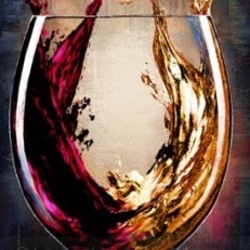

Seghesio Family Vineyards
Sonoma County Old Vine Zinfandel 2013
This fabulous wine, fillets and season 4 House of Cards! 😃 — 10 years ago
Little Black Stone
Pinot Gris 2010
Had at owl house with Tim — 12 years ago
Stone House Vineyard
Claros Norton Reserve 2018
"displays aromas of berries, spiced and cocoa. it shows complexity on the palette of plum and mature red fruits balanced with subtle tannins intense blackberry flavors and spice offset by ripe fruit characteristics". A wonderful wine by a beautiful, great new Texas Hill Country vineyard. — 6 years ago
Drappier
Carte d'Or Brut Champagne Blend
Had this NV about three years ago and tried their new batch. The Carte d'Or cuvée has a very high proportion of Pinot Noir, which is “the Drappier style.” Aromas of stone fruit and spice in a light frothy mousse. On the palate peach, plum and raspberry with citrus zest and earthy spice. Nice flow of bubbles lead to a lingering finish ending with toasty notes. From my ‘16 notes very consistent house quality style. Nice! — 6 years ago
Bodegas Muga
Reserva Unfiltered Rioja Tempranillo Blend 2013
Deep ruby color with light cherry undertones and a wide brim. I hope you like oak because there’s plenty to be found here. Almost shockingly, I can’t say this is over oaked at all, it really is well integrated. Fun little nose with a bit of pepper, cherry candies, stone minerality, and oak. Rioja always seems to get me tingly, especially Muga and while this isn’t the biggest star in their stable it’s consistently good. High acidity that needs some time to even out, but still leaving a refined mouthfeel. Seemingly more New World than Old on the rich palate, there is a ton of energetic fruit here and very interesting minerality. Mushrooms, herbs, and smoke round things out. I like this wine a lot. I’ve got a feeling that in a few more years I might love it. — 6 years ago
Petaluma
Hanlin Hill Riesling 2002
Considered a classic vintage in Clare, and this wine doesn’t disappoint. It’s a beautiful wine. At 16 years old there’s clearly some secondary development and deepening of the golden colour, but it’s surprisingly modest and nuanced, retaining licks of youthful, fresh citrus character and that clean acid finish. The nose is soft with subtle stone fruit characters and hints of kerosene. Once it hits the palate, everything is gloriously in balance. This feels like exactly the right time to be drinking it. It’s exquisite. — 8 years ago
Clos Saron
Heart of Stone Sierra Foothills Syrah 2006
Dr. Loosen
Wehlener Sonnenuhr Kabinett Mosel Riesling 2013
Our go to house white. Great acidity, stone fruit, tropical melon, hint of honey with good minerality. — 9 years ago
Côté Nicault
Stone Tree Vineyard Syrah Blend 2011
Fabulous!!! Christmas dinner with prime rib. marionberry fruit and white pepper and a warm spiciness - bit of nutmeg. New world/old world bridge kind of wine. — 9 years ago
Louis Latour
Corton-Charlemagne Grand Cru Chardonnay 2006
10 yr old #cortoncharlemagne showing its age. Bruised apple, melon, grassy herbs & wet stone. — 9 years ago
Bogle Family Vineyards
Phantom Old Vine California Zinfandel Blend 2010
Tobacco, cherries, and stone fruit come through immediately on tasting the 2010. The Petite Sirah and Mourvèdre nicely blunt the dominating Zinfandel. Smoothness opens up with breathing. It is ready to drink now. An underpriced value! — 10 years ago
Stone Brewing Co.
Old Guardian Barley Wine 2011
I'm going to drink this right now!!! — 12 years ago
Big House Wine Company
Cardinal Zin Beastly Old Vines Zinfandel 2012
@ SuWu on St Laurent avec Yohan et Josee before Rachid Badouri show — 12 years ago
Dalwhinnie
Aged 15 Years Old Highland Single Malt Scotch Whisky
Philipponnat
Clos des Goisses Champagne Blend 1995
Le Parc at Les Crayeres in Reims. From a deep list of aged options I went with one I’m less familiar with. I was not disappointed. Straw gold color. Minimal bubbles in the glass. Great nose that has a mix of fruit, minerals and bread yeast. Notes of apricot, tangerine, toffee and old stone floor. Rich in the mouth with subtle but very present acidity. With a few hours of air this gained amazing complexity. Great stuff. — 7 years ago
Dow's
10 Year Old Tawny Porto
In 1912, Andrew James Symington became a partner in Dow's and today, five members of the fourth generation Symington family own and manage this historic house. 10 Years" indicates an average age – this Aged Tawny Port is a blend of older wines, matured in oak casts. Amber color with aromas of sweet dried fruits, citrus and nutty notes. On the palate sweet ripe fruit, vanilla oak, ending with fig and cacao notes. Smooth, Nice value. Tasting Sample. — 8 years ago
Standing Stone Vineyards
Old West Block Riesling 2015
12.99 pour un bon riesling local — 8 years ago
Galen Glen
Stone Cellar Grüner Veltliner 2016
Another outstanding vintage of this great domestic Gruner! New look, but same great wine. This one never gets old. — 8 years ago
Veuve Clicquot Ponsardin
Yellow Label Brut Champagne Blend
Tasted a small bottle-375ml. A Champagne House is usually judged on the quality of its Brut NV. Pinot Noir provides the structure, typical Clicquot, touch of Pinot Meunier adds roundness and Chardonnay adds elegance. Light golden color with complex aromas of stone and citrus fruits and creamy biscuit. Tiny bubbles, light mousse, flavors of apple and citrus, with raspberry, well balanced structure. The finish has plenty of toasty nutty yeast, clean and elegant on the long ending. Small bottle was very fresh. — 9 years ago
Stone House Vintners
The Lyre Tempranillo
2015. Butter on the front and butter on the back. — 9 years ago
Gouveia Vineyards
Stone House White Blend
When we go to the vineyard this is usually what my hubby and I get. Sweet and refreshing. Great with Food platter. — 9 years ago
Diseño
Old Vine Mendoza Malbec 2013
Birthday gift from Nancy and Jim. Rich wine with an inviting bouquet of stone fruit. A hint of coffee complements the blueberry, spice and chocolate flavors. — 10 years ago
White Stone Vineyards
Heavyweight Champ Thumper Thompson Old Vine Zinfandel 2012
DeNiro vs Stallone. — 12 years ago








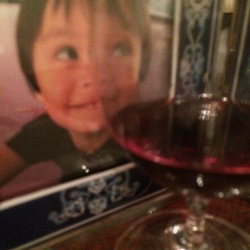

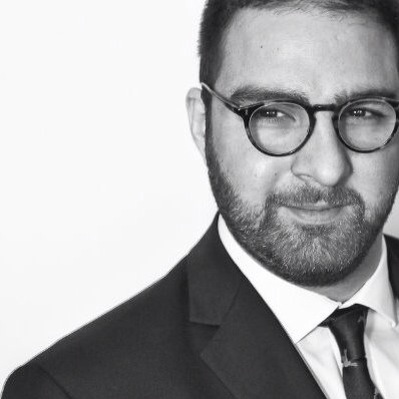


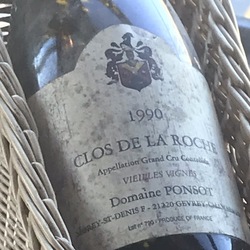





Roger Ray
A wine with a rich purple hue. "Blackberry, raspberry and dark cherry dominate the aromas with complementary notes of anise mocha and tightly vanilla oak" — 6 years ago